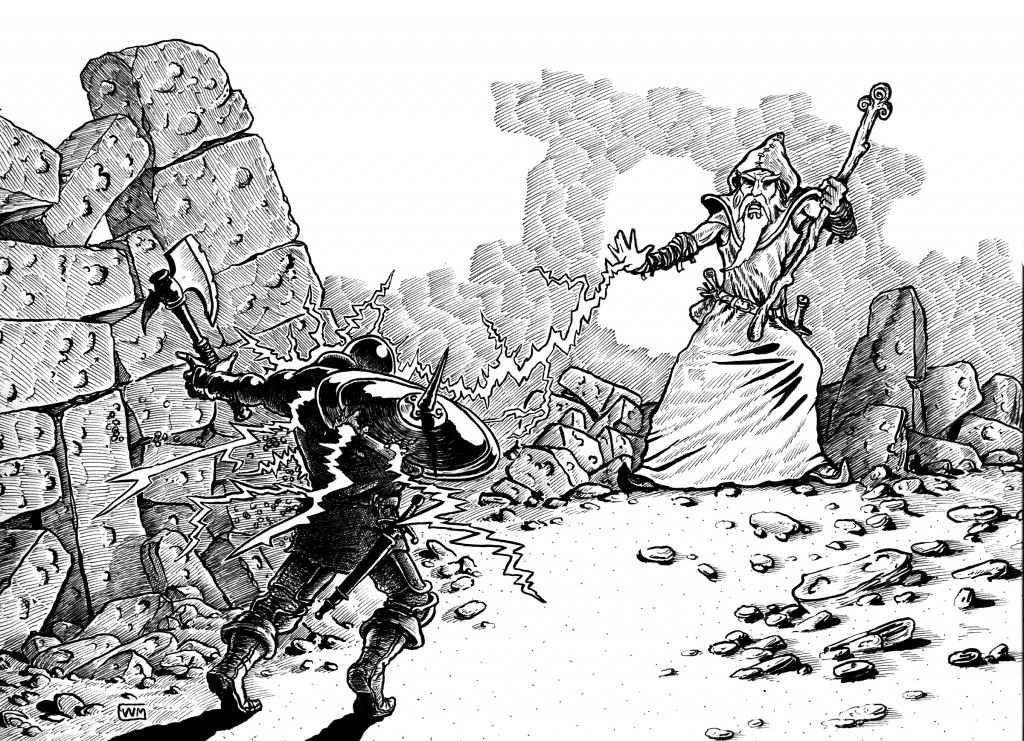What makes an exciting, memorable encounter? Are four orcs in a chamber whose only purpose in life is to guard a chest and get whacked to death by the PCs good design?

Thousands of words have been written about the mechanics of encounter design, but there are other even more basic characteristics of an encounter. A superior GM considers the following before starting to design an encounter:
- The PCs: Looking at the PCs’ character sheets can give you lots of great information about what the players are hoping or expecting to do. Look at the character’s feats, skills and spells and keep them in mind when designing the encounter.
- The Adventure: Designing an encounter in isolation from the rest of the adventure is a bad idea. Sure, you could end up with a great encounter but it might have little or no bearing on the adventure. Worse, it might ruin the feel of the adventure and actually end up having a detrimental effect on the participants’ enjoyment.
Additionally, every encounter should include the following elements:
- Context: The encounter should fit into, and make sense within, the adventure. If the encounter doesn’t, it risks shattering the players’ suspension of disbelief.
- Purpose: What’s the purpose the encounter? Not every encounter has to include a major villain, or drive the plot forward in a major, meaningful fashion, but an encounter shouldn’t just be an excuse for a fight. Sure, stage a fight with goblins but have some other point to it. Can the PCs rescue a prisoner, take a prisoner, destroy the tribe’s weapon supple and so on? (The only possible exception to this caveat are random encounters).
- Challenge: A challenge provides an opportunity for the players to roll dice and use their character’s abilities. A challenge doesn’t have to be a fight. The players may have to find their way through a featureless desert or extract information from a prisoner. To provide a challenge, an encounter needs opponents. Remember, a succession of encounters requires a variety of opponents. Defeating the same creatures again and again quickly gets boring. Finally, the opponents should make sense in the overall context of the story. Why have the PCs encountered orcs in the goblins’ lair? Perhaps they are discussing alliance?
- Flavour: Flavour is something that elevates an okay adventure to an awesome adventure. Adventures need flavour. Perhaps the orcs shout a certain battle cry or wear a certain heraldic device. Include as much of this as you can.
- Environment, Terrain & Features: Encounters in a featureless room are colossally boring. Provide features with which the PCs can interact. Can they leap atop a table or knock over a barrel of wine? Is the tavern common room so packed they can easily evade detection by their enemies? Providing encounter features rewards attentive, clever players and creates interesting situations.
- Reward: Beyond gaining experience points, most encounters should provide some form of reward. Obviously some creatures do not carry treasure, but the PCs could discover a safe place to spend the night, a secret way into the enemy stronghold or have the chance to make a new friend.
So there you have. Consider the points above and you’ll be well on your way to designing memorable, exciting encounters.
Help Fellow GMs!
Have you got any helpful tips or tricks for encounter design? Got any examples of terrible encounter design? Share them in the comments section below and help other GMs build better encounters.
One thought on “GM Advice: How to Design Encounters”